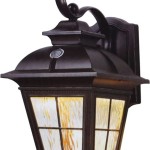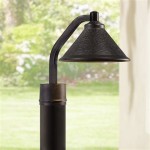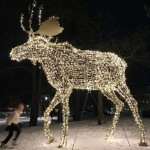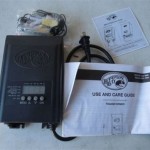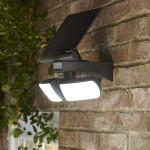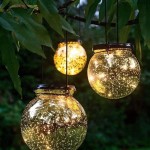Illuminating Your Outdoor Spaces: A Comprehensive Guide to LED Strip Outdoor Lights
LED strip lights have revolutionized the way outdoor spaces are illuminated. Offering versatility, energy efficiency, and a spectrum of color options, they have become a popular choice for homeowners and businesses alike seeking to enhance ambiance, improve safety, and add aesthetic appeal. This article explores the various aspects of LED strip outdoor lights, including their benefits, types, installation considerations, and applications.
Outdoor lighting plays a crucial role in creating a welcoming and secure environment. Traditional outdoor lighting options, while functional, often lack the flexibility and energy efficiency of LED strip lights. These lights offer a customizable solution for a wide range of outdoor lighting needs, from highlighting architectural features to creating mood lighting for patios and gardens.
Understanding the Advantages of LED Strip Outdoor Lights
The adoption of LED strip lights for outdoor use is largely driven by their numerous advantages over conventional lighting technologies. These advantages encompass aspects such as energy consumption, longevity, design flexibility, and environmental impact.
One of the most significant advantages is energy efficiency. LED strip lights consume significantly less energy compared to traditional incandescent or halogen bulbs. This translates into lower electricity bills and a reduced carbon footprint. The energy savings can be particularly substantial when used for prolonged periods, as is often the case with outdoor lighting.
Longevity is another key benefit. LED strip lights boast a significantly longer lifespan than traditional lighting sources. This extended lifespan minimizes the need for frequent replacements, reducing maintenance costs and the inconvenience associated with replacing burnt-out bulbs. The durability of LED technology makes it well-suited for outdoor applications where exposure to the elements can shorten the lifespan of less robust lighting options.
Design flexibility is a major draw for many users. LED strip lights are available in various lengths, widths, and colors, allowing for a high degree of customization. They can be easily cut to size and shaped to fit specific areas or designs. This flexibility makes them ideal for highlighting architectural details, illuminating pathways, and creating decorative lighting effects.
Finally, LED strip lights are generally considered to be more environmentally friendly than traditional lighting options. They do not contain hazardous materials such as mercury, and their energy efficiency reduces the demand for electricity generated from fossil fuels. The longer lifespan of LED strip lights also reduces the amount of waste generated from discarded bulbs.
Types of LED Strip Lights for Outdoor Applications
Selecting the appropriate type of LED strip light is crucial for ensuring optimal performance and longevity in outdoor environments. Different types of LED strip lights are available, each with its own characteristics and suitability for specific applications.
Waterproof or water-resistant LED strip lights are essential for outdoor use. These strips are designed to withstand exposure to rain, snow, and humidity. They are typically encapsulated in a silicone or epoxy coating that protects the internal components from moisture damage. The Ingress Protection (IP) rating of the strip light indicates its level of protection against water and dust. For outdoor applications, an IP rating of IP65 or higher is generally recommended.
Color-changing (RGB) LED strip lights offer the ability to create a wide range of color effects, enhancing the ambiance of outdoor spaces. These strips use a combination of red, green, and blue LEDs to produce a virtually limitless spectrum of colors. They are often controlled by a remote or smartphone app, allowing users to easily adjust the color and brightness to suit their preferences. RGB strip lights are popular for creating festive lighting displays or for setting a relaxing mood on patios and decks.
Adjustable white LED strip lights provide control over the color temperature of the light. Color temperature is measured in Kelvin (K) and ranges from warm white (around 2700K) to cool white (around 6500K). Warm white light creates a cozy and inviting atmosphere, while cool white light provides brighter and more focused illumination. Adjustable white strip lights allow users to fine-tune the color temperature to match the desired ambiance or application. They are particularly useful for highlighting architectural features or providing task lighting in outdoor kitchens or workspaces.
High-density LED strip lights feature a greater number of LEDs per unit length, resulting in a brighter and more uniform light output. These strips are ideal for applications where a strong and even light source is needed, such as illuminating pathways or highlighting landscaping features. High-density strips also tend to produce less noticeable "hot spots" or individual points of light, creating a smoother and more aesthetically pleasing appearance.
Installation Considerations and Best Practices
Proper installation is critical for ensuring the longevity and performance of LED strip lights in outdoor settings. Careful planning and attention to detail are essential for avoiding common problems such as water damage, overheating, and premature failure.
Surface preparation is a crucial first step. The surface to which the LED strip lights will be attached should be clean, dry, and free of debris. This will ensure proper adhesion and prevent moisture from becoming trapped beneath the strip. For porous surfaces, such as wood or concrete, it may be necessary to apply a primer to improve adhesion.
Power supply selection and wiring are important considerations. The power supply must be rated for outdoor use and have sufficient capacity to power the entire length of LED strip lights. It is also essential to use appropriate wiring and connectors to ensure a secure and weatherproof connection. Consider using a low-voltage system for added safety, especially in areas where children or pets may be present.
Mounting methods should be chosen based on the specific application and the type of surface being illuminated. Options include adhesive backing, mounting clips, and aluminum channels. Adhesive backing is suitable for smooth, non-porous surfaces, while mounting clips provide a more secure and permanent attachment. Aluminum channels not only provide physical protection for the LED strip lights but also act as a heat sink, dissipating heat and prolonging the lifespan of the LEDs.
Protection from the elements is paramount. Even with waterproof LED strip lights, it is advisable to provide additional protection from direct sunlight and heavy rain. This can be achieved by installing the lights under eaves, awnings, or other protective structures. Consider using waterproof connectors and sealing any exposed wires to prevent water ingress.
Regular maintenance is important for ensuring the continued performance of LED strip lights. Periodically inspect the lights for signs of damage or wear and tear. Clean the strips with a soft, damp cloth to remove dirt and debris. Replace any damaged or malfunctioning components promptly to prevent further issues.
When planning outdoor lighting designs using LED strip lights, consider the impact on neighbors and the environment. Avoid excessive brightness or glare that could be disruptive to others. Use downward-facing lights and shields to minimize light pollution and direct the light where it is needed. Choose energy-efficient LED strip lights and power supplies to reduce energy consumption and environmental impact.
Choosing the correct power supply is essential for long-term reliability. The power supply must have enough wattage to handle the entire length of LED strip lights being powered. It is generally recommended to choose a power supply with at least 20% extra capacity to account for voltage drop and potential future expansion. The power supply should also be rated for outdoor use, with an IP rating of at least IP65. Consider using a dimmable power supply to allow for adjusting the brightness of the LED strip lights.
When cutting LED strip lights to length, it is important to cut only at the designated cutting points, which are typically marked with scissors icons. Cutting the strip in the wrong place can damage the LEDs and render the strip unusable. Use sharp scissors or a specialized LED strip light cutter to ensure a clean cut. After cutting, seal the end of the strip with a waterproof end cap or silicone sealant to prevent water ingress.

Color Changing Waterproof Strip Lights For Outdoor Landscape Lighting

Outdoor Led Strip Lights Brightest Weatherproof

How To Choose And Install Led Garden Lights

Hue Outdoor Led Lightstrips 197inch White And Colour Ambiance Philips Us

Outdoor Led Strip Lights Cync

Color Changing Waterproof Strip Lights For Outdoor Landscape Lighting

Hue Outdoor Led Lightstrips 197inch White And Colour Ambiance Philips Us

Slv 552301 Led Strip Outdoor 100 Pro 24v 8 5w 5700k Ceiling Wall Floor Decorative Light Lighting Commercial By Right Lights

Solar Powered Led Strip Lights Stairs Step Outdoor Waterproof For Gazebo Canopy Pool Decor China Light Made In Com

Led Strip Lights For Landscape Outdoor Garden Lighting Bondilights

